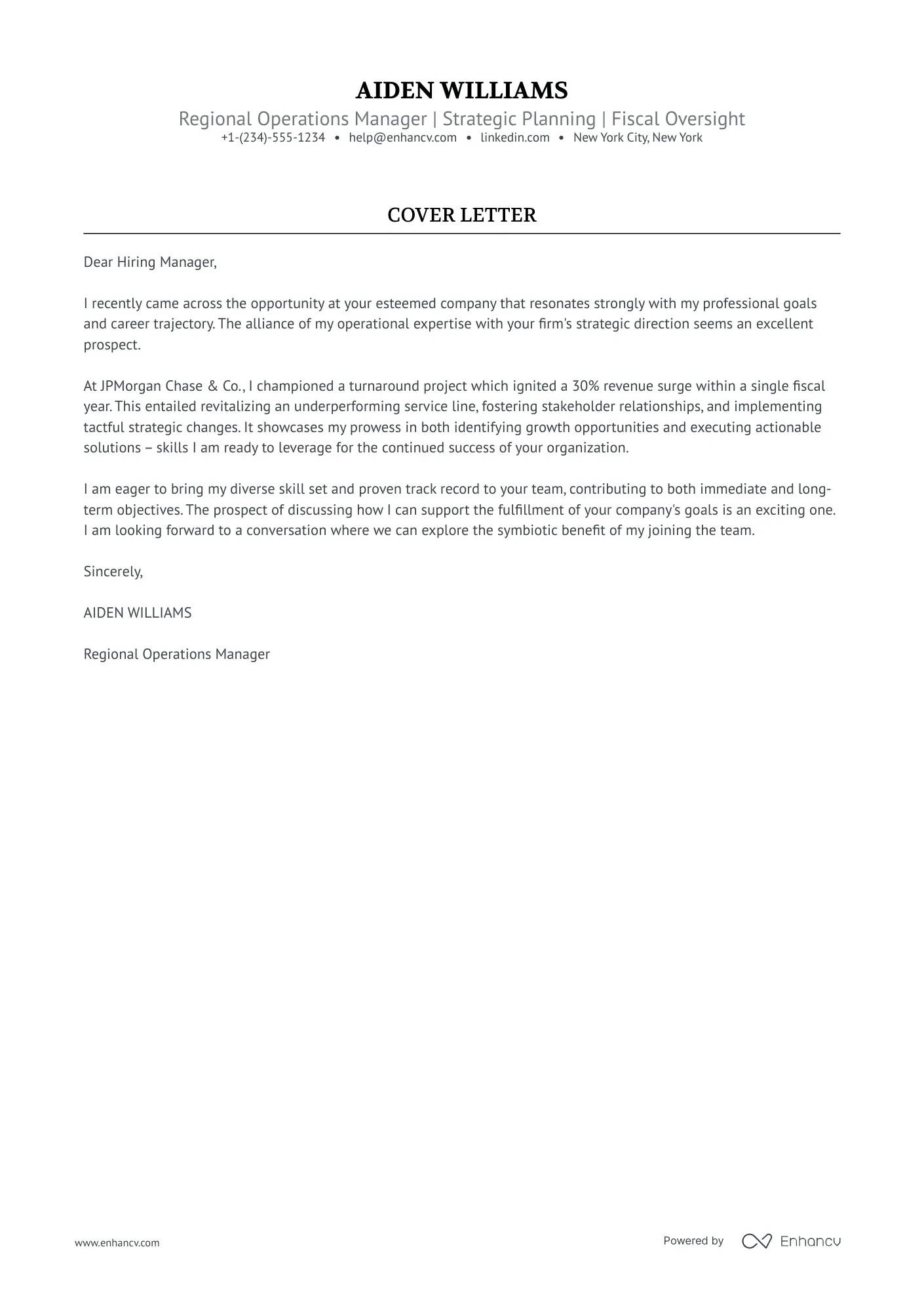What is a Director Cover Letter
A Director cover letter is a crucial document that accompanies your resume when applying for a director-level position. It serves as your first direct communication with the hiring manager, allowing you to showcase your qualifications, experience, and enthusiasm for the role. Unlike a resume, which provides a factual overview of your career, a cover letter offers an opportunity to tell your story, explain your motivations, and demonstrate how your skills align with the specific requirements of the job and the needs of the company. It is your chance to make a strong first impression and convince the hiring manager to read your resume and invite you for an interview. A well-crafted cover letter is not just a formality; it’s a strategic tool to differentiate yourself from other candidates and increase your chances of landing your dream job as a director.
Key Components of a Director Cover Letter
A compelling Director cover letter consists of several key components that work together to create a persuasive narrative. These elements include a professional header with your contact information, a personalized salutation that addresses the hiring manager by name, an engaging opening paragraph that grabs the reader’s attention, a middle section that highlights your relevant skills and achievements, and a closing paragraph with a clear call to action. The cover letter should showcase your ability to lead, manage, and drive results. It is important to emphasize your accomplishments with quantifiable results, and your experience should be tailored to the specific needs of the role. Furthermore, demonstrate enthusiasm for the company and express your interest in the position, and always proofread the document to ensure accuracy and professionalism.
Header and Contact Information
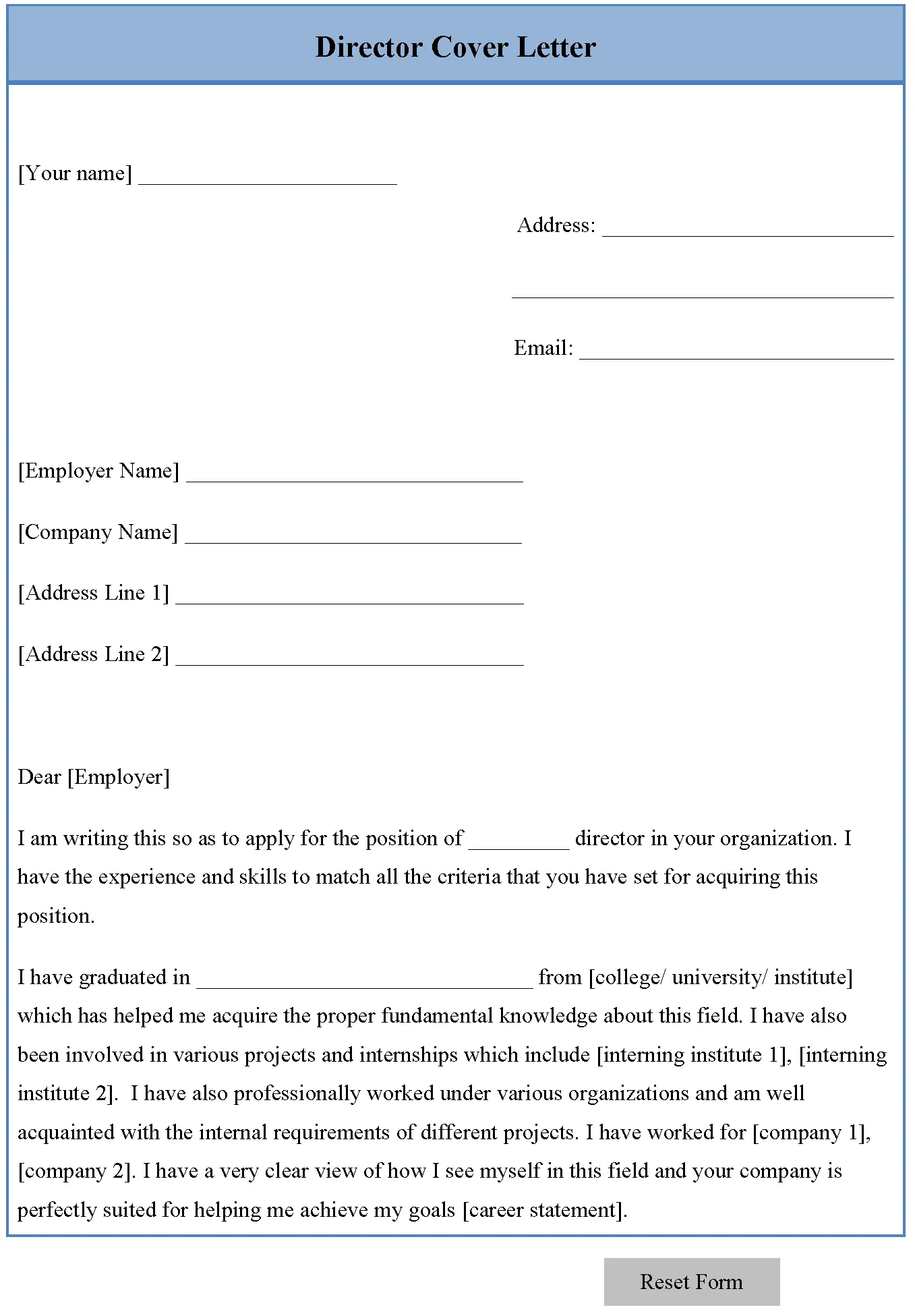
Your cover letter header should be clean, professional, and include your full name, phone number, email address, and optionally, your LinkedIn profile URL. Ensure that your contact information is easy to read and up-to-date. Place the header at the top of the document, aligning it to the left or right, according to your preference, but be consistent with your chosen style. This section provides the hiring manager with immediate access to your contact details, enabling them to reach you quickly. Consider using a professional email address; avoid using nicknames or unprofessional addresses. The header sets the tone for the rest of your cover letter, so make it visually appealing and easy to scan. Make sure that it matches the header on your resume for a cohesive look.
Personalized Salutation
Avoid using generic salutations such as “To Whom It May Concern.” Instead, take the time to research the hiring manager’s name and address them directly, such as “Dear Mr./Ms. [Last Name].” This personal touch shows that you have done your research and are genuinely interested in the role. If the hiring manager’s name is not available, try to find the name of the hiring team or department. A personalized salutation immediately grabs the reader’s attention and makes your cover letter stand out from those using generic greetings. It signals your attention to detail and your initiative in getting to know the company. Using the correct salutation sets a positive tone for the entire letter, indicating that you have taken the time to tailor your application to the specific opportunity.
Opening Paragraph Grab Attention
The opening paragraph is your chance to make a strong first impression and capture the hiring manager’s attention. Start with a compelling hook that briefly introduces yourself and immediately states the position you’re applying for. You can mention how you learned about the opportunity, why you’re interested in the company, or a key achievement that directly relates to the job requirements. Keep the opening concise, engaging, and focused on the value you can bring to the role. Avoid generic statements or clichés. Instead, demonstrate your enthusiasm and connect your skills and experience to the company’s needs. The goal is to make the reader want to learn more about you. This initial paragraph sets the stage for the rest of your cover letter, so make it count. The initial paragraph should immediately convey your understanding of the company and the director role.
Highlight Your Director Skills and Achievements
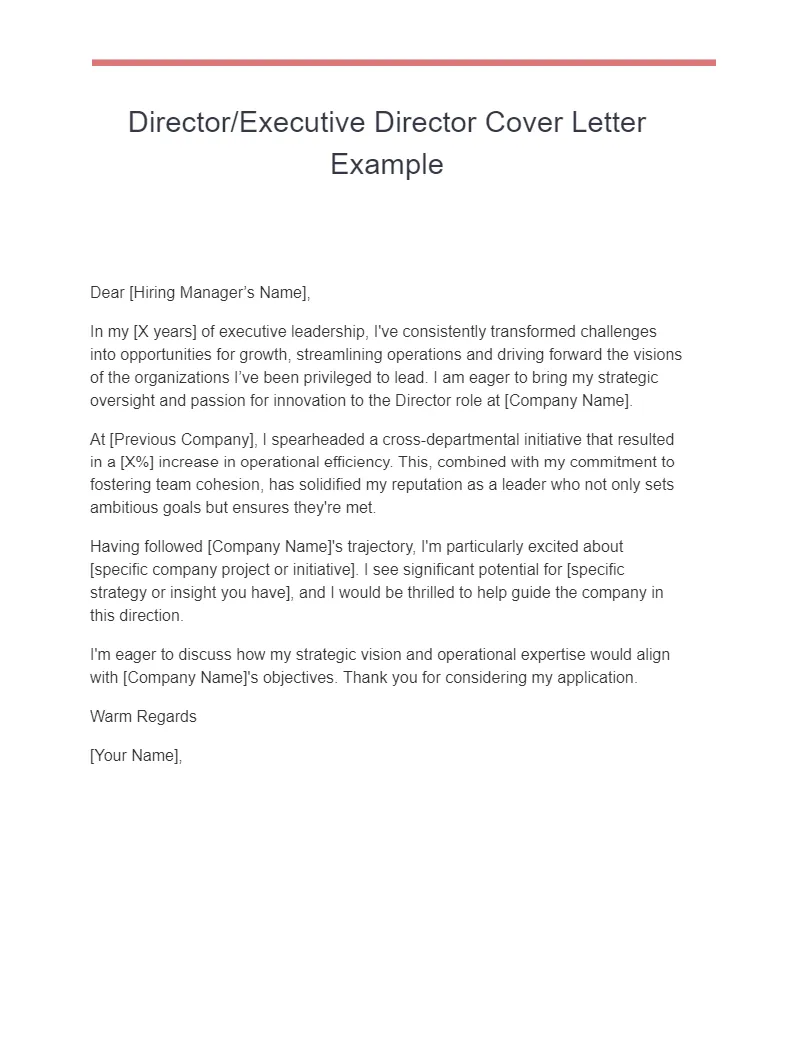
The body of your cover letter should focus on highlighting your most relevant skills and achievements. Choose the skills and experiences that align with the job description and demonstrate your ability to excel in the director role. Use specific examples to illustrate your accomplishments and how you have made a positive impact in previous positions. Focus on leadership, strategic planning, problem-solving, and other essential director skills. Show, don’t just tell; provide concrete examples of your achievements, such as how you increased revenue, reduced costs, improved efficiency, or led successful projects. Back up your claims with data and quantifiable results whenever possible. This section should be tailored to the specific requirements of the job, making your cover letter highly relevant and demonstrating your suitability for the role. Tailor each cover letter to the specific requirements and needs of the potential employer.
Quantify Your Accomplishments
Quantifying your accomplishments is essential to demonstrate the impact you’ve made in previous roles. Use numbers, percentages, and specific data to illustrate your achievements. Instead of saying “Improved sales,” state “Increased sales by 15% in one year.” Instead of saying “Managed a team,” specify “Managed a team of 50 employees.” Quantifiable results provide concrete evidence of your capabilities and make your achievements more compelling. They help the hiring manager understand the value you can bring to their organization. When describing your achievements, focus on the results you achieved rather than the tasks you performed. Always include data and metrics that showcase your success. Consider using bullet points to highlight your accomplishments, making them easy to read and understand. The more specific you are, the more convincing your claims will be.
Showcase Relevant Experience
In this section, carefully select and describe your professional experience that directly aligns with the requirements of the director position. Tailor your cover letter to the specific job description, emphasizing the experiences and skills that the employer is seeking. Provide detailed descriptions of your previous roles and responsibilities, highlighting how you have successfully led teams, managed projects, and achieved strategic goals. Use keywords from the job description to demonstrate that you possess the necessary qualifications. Focus on the most relevant and recent experiences, but briefly mention any other experiences that provide context or demonstrate your career progression. Explain how your past experiences have prepared you to excel in this director role and how your skills can benefit the company. Always be specific and provide context to your description.
Address the Company’s Needs
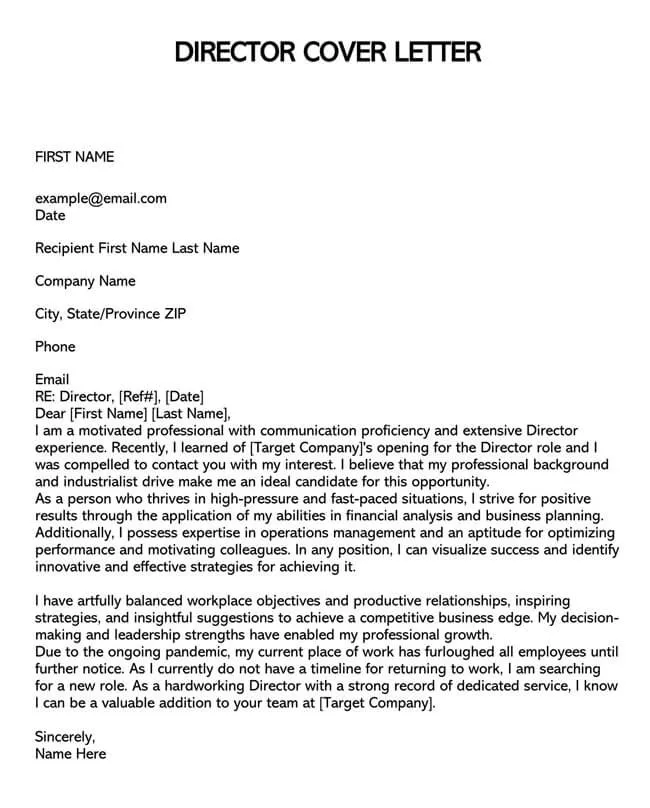
A great director cover letter demonstrates that you understand the company’s needs and challenges. Research the company, its mission, and its recent initiatives. In your cover letter, explain how your skills and experience can help the company achieve its goals and address its challenges. Show that you have a clear understanding of the industry, the market, and the company’s position within it. Use specific examples to illustrate how you can contribute to the company’s success. By demonstrating that you understand the company’s needs, you show that you are not just looking for a job, but that you are committed to helping the company thrive. Mention any specific projects or initiatives that align with the company’s current focus. This section underscores that you are the right fit for the company.
Express Enthusiasm and Interest
Throughout your cover letter, express your enthusiasm for the position and your genuine interest in the company. Avoid sounding generic or indifferent. Instead, clearly state why you are excited about this opportunity and why you believe you are a good fit for the company. Highlight what attracted you to the company and the role, whether it’s the company culture, its mission, or the specific responsibilities of the position. Show that you have done your research and are invested in the company’s success. Your enthusiasm should be genuine and should reflect your passion for your work. Show that you are eager to contribute your skills and experience to the company. The best way to make an impression is to show a clear interest in the director position and organization.
Closing Paragraph and Call to Action
The closing paragraph should summarize your interest in the position, reiterate your qualifications, and include a clear call to action. Express your gratitude for the reader’s time and consideration. State your availability for an interview and how they can contact you. Reiterate your excitement about the opportunity. A strong call to action might be something like, “I am eager to discuss how my experience and skills can benefit your organization. Thank you for your time and consideration. I look forward to hearing from you soon.” Ensure that you have provided a way for the hiring manager to contact you. This is the final impression you will leave. Make it a memorable one by being both professional and eager to learn more about the opportunity.
Formal Closing and Signature
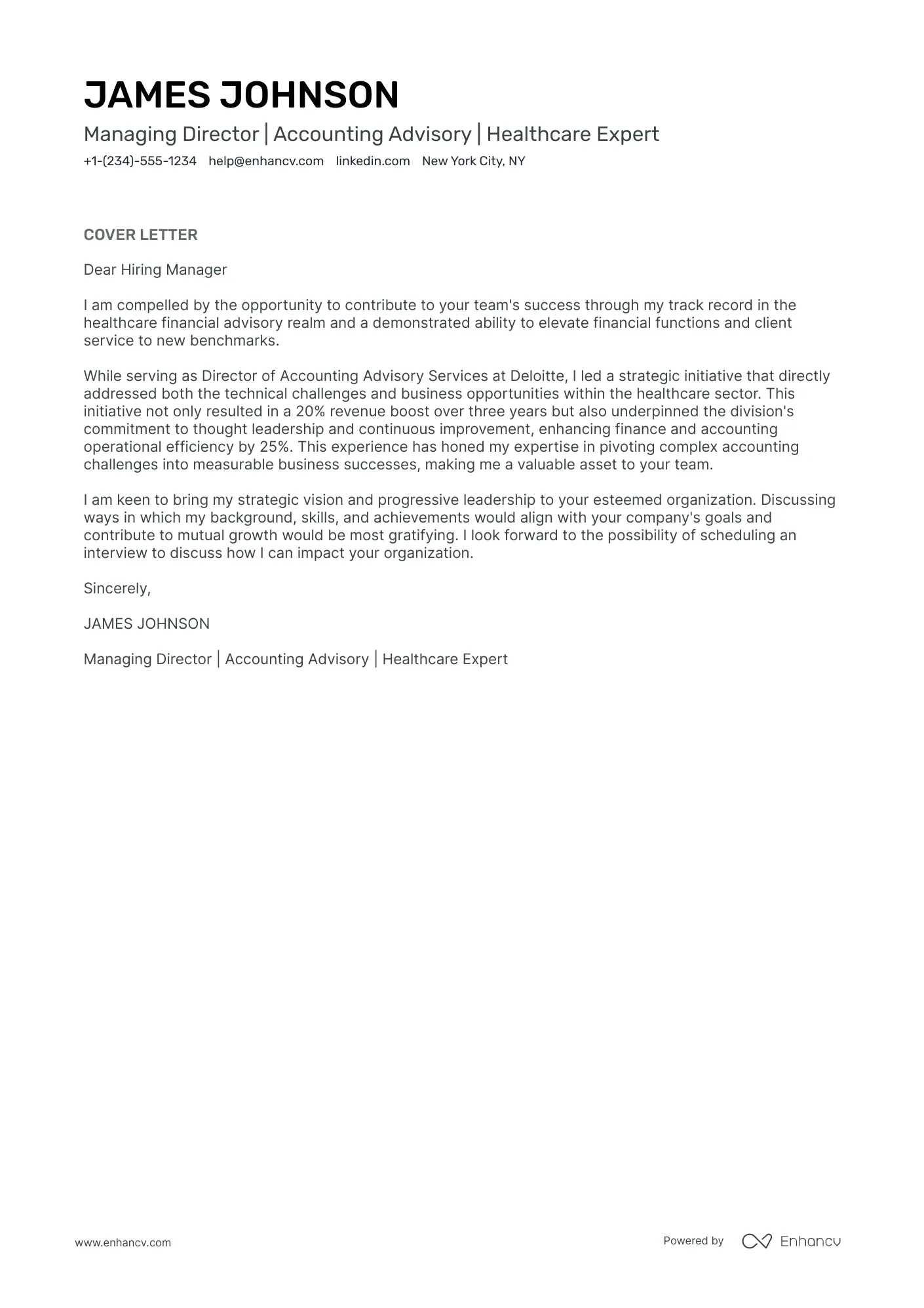
Conclude your cover letter with a professional closing, such as “Sincerely,” “Best regards,” or “Respectfully.” Leave space for your signature, and type your full name below the closing. If you are submitting an electronic cover letter, you can insert a scanned image of your signature. Make sure your closing is consistent with the overall tone and style of your cover letter. It should be formal and polite, but also reflect your personality. Your signature is a personal touch and reinforces your professionalism. A well-crafted closing and signature complete your cover letter and leave a lasting positive impression. Ensure that you maintain consistency in your formatting, font, and style to maintain professionalism.
Proofreading and Editing Your Cover Letter
Before submitting your cover letter, carefully proofread and edit it for any errors in grammar, spelling, and punctuation. Typos and grammatical errors can undermine your professionalism and give the impression that you are not detail-oriented. Read your cover letter aloud to catch any awkward phrasing or grammatical mistakes. Use a grammar checker to identify any potential issues. Ask a friend, colleague, or career counselor to review your cover letter and provide feedback. Ensure that your cover letter is well-organized, concise, and easy to read. Edit it several times to make sure the final draft is polished and professional. Correct all mistakes before submitting your cover letter to potential employers. The final edit is crucial to make sure your cover letter is without errors.
Reviewing Examples of Successful Director Cover Letters
Reviewing examples of successful director cover letters can provide valuable insights and guidance. Search online for templates and examples of director cover letters that match your industry and experience. Analyze how the writers structure their letters, highlight their skills, and quantify their achievements. Pay attention to the language they use, the tone, and the overall formatting. Adapt elements from these examples to create your own cover letter, but make sure to personalize it to reflect your unique skills, experience, and the specific requirements of the job. Use the examples as inspiration, but avoid copying them. Always focus on showcasing your own strengths and accomplishments. Ensure that all the elements in your cover letter are relevant to your specific qualifications and the job description. Be inspired, but customize it to suit your specific needs.
Example 1 Director of Operations
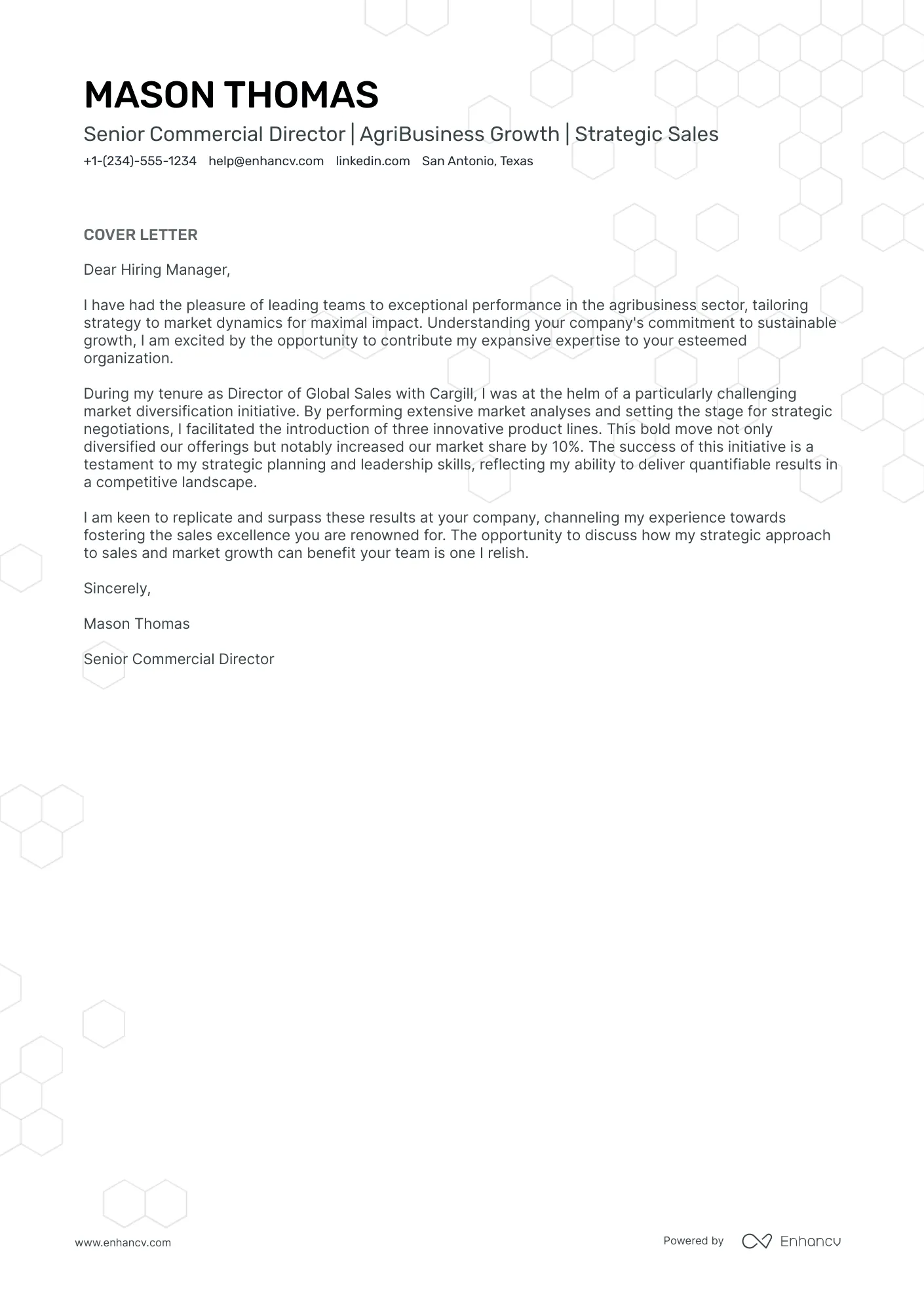
For a Director of Operations position, your cover letter should emphasize your ability to streamline processes, improve efficiency, and manage teams to achieve operational excellence. Highlight your experience in project management, process improvement, and resource allocation. Provide examples of how you have successfully implemented cost-saving measures and increased productivity. You should highlight your ability to lead and manage teams.
Example 2 Director of Marketing
A Director of Marketing cover letter should focus on your marketing strategies, brand management, and your ability to drive revenue growth. Showcase your experience in digital marketing, content creation, market research, and campaign management. Provide examples of successful marketing campaigns you have led and the positive impact they had on revenue, brand awareness, and customer acquisition. Highlight your ability to develop and implement effective marketing plans.
Example 3 Director of Finance
If you are applying for a Director of Finance position, emphasize your financial analysis skills, budget management, and experience in financial reporting and strategic planning. Highlight your experience in managing budgets, reducing costs, and improving financial performance. Provide specific examples of how you have successfully managed financial risks and ensured compliance with financial regulations. Show your financial expertise and strategic planning experience.
Tailoring Your Cover Letter to Different Industries
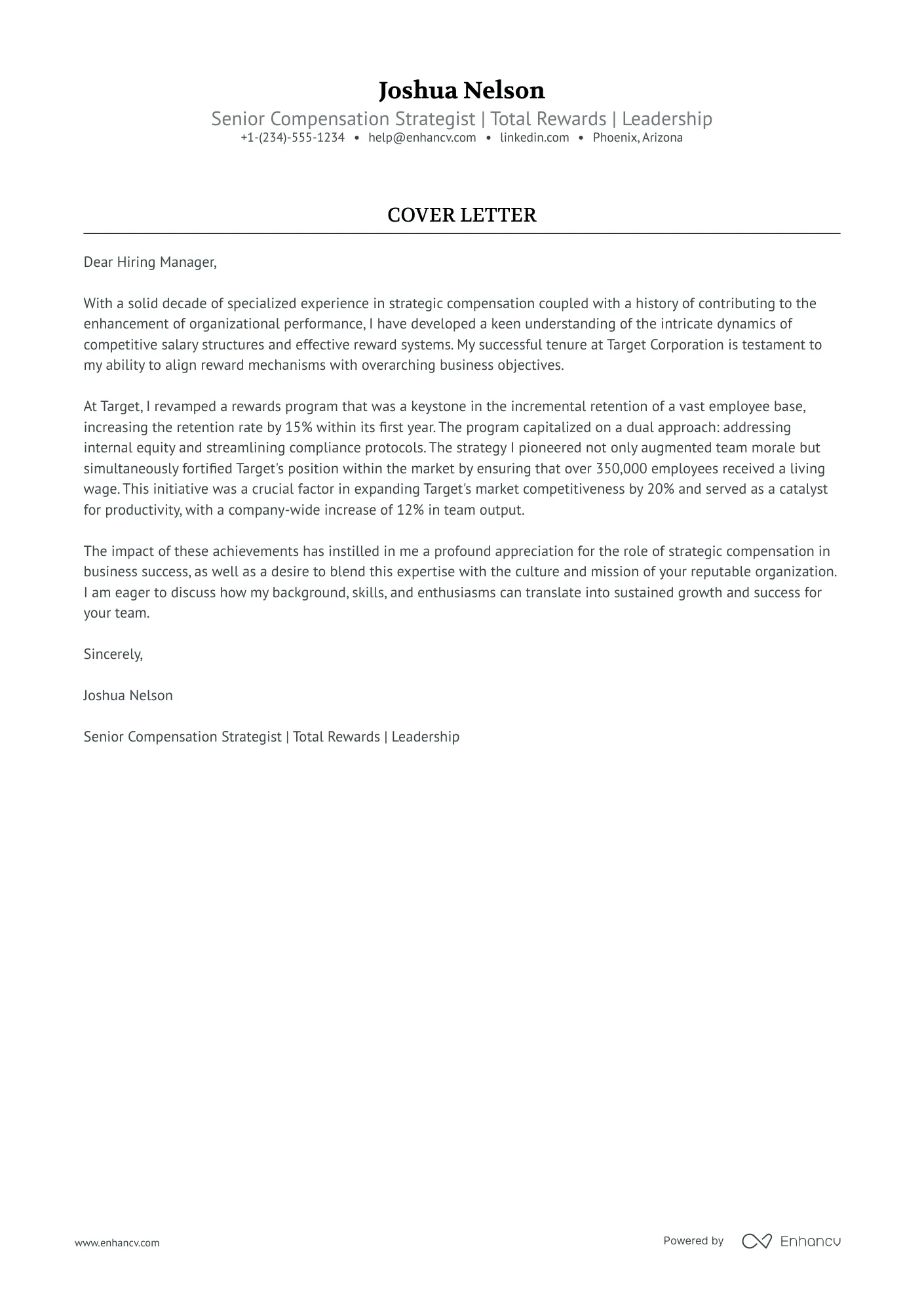
It is essential to tailor your cover letter to the specific industry you are applying to. Each industry has its own unique requirements, terminology, and expectations. Research the industry and the specific company you are applying to, and customize your cover letter accordingly. Use industry-specific keywords and highlight the skills and experiences most relevant to that industry. Demonstrate your understanding of the industry’s challenges and opportunities. Consider the industry’s unique terminology and adapt your language. Tailor your cover letter to match each industry’s standards.
Common Mistakes to Avoid in a Director Cover Letter
Avoid common mistakes that can hurt your chances of getting hired. Do not use generic cover letters. Instead, personalize each one to the specific job and company. Avoid grammatical errors, typos, and unprofessional language. Do not exceed the recommended length. Keep your cover letter concise and to the point. Avoid repeating information that is already in your resume. Do not be vague about your accomplishments; quantify them with data and metrics. Avoid a negative tone or excessive self-praise. Never lie or exaggerate your qualifications. Make sure that you showcase your unique skills and achievements.
Formatting and Design Tips for Your Cover Letter
Pay attention to the formatting and design of your cover letter. Use a professional font and keep it consistent throughout the document. Ensure that your cover letter is easy to read and visually appealing. Use clear headings and subheadings to organize your information. Use white space effectively to prevent the document from looking cluttered. Proofread carefully to make sure there are no errors. Choose a clean, simple layout that is easy to scan. The use of a professional font also helps the readability of your cover letter. Make sure that the formatting is easy to read.
Submitting Your Cover Letter and Resume
When submitting your cover letter and resume, follow the instructions provided in the job posting. If the instructions are not specified, send your cover letter and resume as attachments in a PDF format. Use a professional file name, such as “Your Name_Cover Letter_Director.” Always double-check that you have attached the correct files before sending your application. Send your documents by the deadline. Before sending, confirm that your cover letter and resume match each other and are formatted correctly. Submit your cover letter and resume as instructed.
